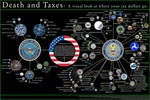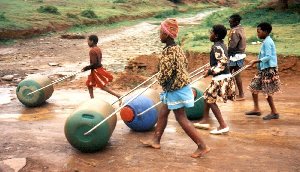Found 4306 matches from 1,400 records in about 0.2652 seconds for phone or e or geodeta.
 With regards to this post, reader ryan sent me this bit from NYU’s Robert F. Wagner Labor Archives about another labor-driven counter-olympics event. This one hosted by the Jewish Labor Committee in New York City as part of its anti-Nazi campaign:
With regards to this post, reader ryan sent me this bit from NYU’s Robert F. Wagner Labor Archives about another labor-driven counter-olympics event. This one hosted by the Jewish Labor Committee in New York City as part of its anti-Nazi campaign:
“When the American Olympics Committee declined to heed widespread protests against United States participation in the Berlin Olympics of 1936, the [Jewish Labor Committee] held a World Labor Athletic Carnival (also known as the Counter-Olympics) at Randall’s Island in New York City during August 1936. Dozens of teams representing New York union locals competed, and the main events featured outstanding amateur athletes from across the country. Governor Herbert Lehman presented the prizes. The Carnival received extensive nationwide press coverage, and the JLC repeated the event in the summer of 1937.”
The site has a few images from the movement.
This has faded from the NPR site, so here it is for posterity. From NPR: Talk of the Nation, July 3, 2003:
LYNN NEARY, host: When most Americans think of the paper version of the Declaration of Independence, they think of the document kept by the National Archives written in calligraphy and signed by the Founding Fathers. It’s faded and fragile, and for some people not as symbolic of democratic principles as other lesser known works. Here to talk about that is Thomas Starr. He’s a professor of graphic design at Northeastern University. We reached him at his home in Boston.
Thanks for being with us, Professor Starr.
Professor THOMAS STARR (Northeastern University): Thank you, Lynn.
NEARY: All right. Now, Professor Starr, most Americans are familiar with the calligraphy version of the Declaration of Independence, but tell us about the documents that predate it.
Prof. STARR: Well, we really have to start on July 2nd. That was the day that Congress voted in favor of independence, after which it took up editing the Declaration text. That editing took some time. It took two days, and it was quite heavy. Congress deleted about one-third of it and made 39 changes in addition. So on July 4th, when that manuscript was finished, in its form it was taken not to a calligrapher but to a typographer. And that typographer was John Dunlop. He was Congress’ official printer. And I would say he had the most important overnight printing job in history. He set the text in type, so he assembled it for the first time in its complete form, and ran his presses overnight, delivering to Congress on the 5th. So these were then delivered to the 13 colonies, where they were republished and disseminated further. These were the prints that the colonists saw. So the published Dunlop prints are really what did the declaring. And when you think of July Fourth, I mean, it’s a holiday in which the date is emphasized more than any other. And so what it actually celebrates is this day of typesetting and printing.
NEARY: When did the calligraphy document then come along?
Prof. STARR: Well, the calligraphy didn’t actually get ordered by Congress until July 19th. And what’s interesting is by then we know that the Dunlop Declarations had spread so far that they had been republished in 24 newspapers from Maryland to New Hampshire. And, you know, in 1776 Congress still traditionally formed its most important documents in calligraphy. It was a tradition left over from monarchy. But it had to use typography to communicate with the people. Typography really is the medium of democracy. So the calligraphic version now in the National Archives was finished only on August 2nd, so it really can’t be the version we’re commemorating when we think of the Fourth. And the type, for many reasons, is a more democratic version of the Declaration.
Q-Drum Rollable Water Bottle
“Water in adequate quantities is too heavy to carry. The burden of fetching water, invariably over long distances by cumbersome and far too often, unhygienic means, is all too evident in rural Africa.... The Q-Drum is a low cost rollable water container for developing countries. The idea of the Q-Drum originated in response to the needs of rural people for clean and potable water, as well as easing the burden of conveying it....
The Q-drum is user friendly and the unique longitudinal shaft permits the drum to be pulled using a rope run through the hole. There are no removable or breakable handles or axles, and the rope can be repaired on the spot or replaced by means available everywhere, such as a leather thong or a rope woven from plant material.”
More: http://www.qdrum.co.za
Watercone
The Watercone is a transparent, polycarbonite cone tuns salt water into potable water cheaply using the power of the sun. The system can produce one liter of clean drinking water a day. Salt water poured into the base evaporates and condenses onto the wall of the cone, trickling into a circular trough at the inner base of the cone. Then just unscrew the cap and turn the cone upside down to pour the potable water into a drinking device.
The cone is non-toxic, non-flammable and 100% recyclable. The black pan for the saltwater is made out of 100% recycled plastic.
More: http://www.watercone.com
Safe Bottle Lamp
“In his hospital alone they were seeing someone die from lamp burns three times a week and thousands of people horribly disfigured, their lives ruined by a preventable accident....
Lamp-burns, [Wijaya Godakumbura, a surgeon in Sri Lanka,] realized, are a disease of poverty. Only the very poor use makeshift lamps. And because they are very poor, no-one is much concerned to do anything to help them. Most of the victims are female and nearly a third are children. Yet, it seemed to him, the problem was preventable....
‘I decided the best design was based on a simple Marmite bottle – small and squat, with two flat sides – equipped with a safe screw-cap to hold the wick. That way, the bottle was more stable. The fuel does not spill if the bottle overturns. It cannot roll. It is strong enough not to break if dropped.’”
In these pages I’m usually down on depoliticized, product-based fixes for poverty. But then sometimes the impact of a simple change in form is astonishing.

Reader sum1 writes in response this post touting the Q-Drum. He notes a similar product also launched in South Africa called the Hippo Water Roller. While a 1997 Time article reports the Q-Drum’s launch in 1994, the Hippo Roller Web site cites a South African Bureau of Standards 1992 Design Award.
Both are rugged, round water containers designed to be rolled on tough rural roads. But while the Q-Drum is shaped like a tubular donut with a hollow inner core, the Hipporoller is notched at both ends for the attachment of a clip-on steel tube one can use to to pull or push.
Pushing the container in front of the user has the additional advantage of acting as a buffer against landmines.

page 1 2 3 4 5 6 7 8 9 10 11 12 13 14 15 16 17 18 19 20 21 22 23 24 25 26 27 28 29 30 31 32 33 34 35 36 37 38 39 40 41 42 43 44 45 46 47 48 49 50 51 52 53 54 55 56 57 58 59 60 61 62 63 64 65 66 67 68 69 70 71 72 73 74 75 76 77 78 79 80 81 82 83 84 85 86 87 88 89 90 91 92 93 94 95 96 97 98 99 100 101 102 103 104 105 106 107 108 109 110 111 112 113 114 115 116 117 118 119 120 121 122 123 124 125 126 127 128 129 130 131 132 133 134 135 136 137 138 139 140 141 142 143 144 145 146 147 148 149 150 151 152 153 154 155 156 157 158 159 160 161 162 163 164 165 166 167 168 169 170 171 172 173 174 175 176 177 178 179 180 181 182 183 184 185 186 187 188 189 190 191 192 193 194 195 196 197 198 199 200 201 202 203 204 205 206 207 208 209 210 211 212 213 214 215 216 217 218 219 220 221 222 223 224 225 226 227 228 229 230 231 232 233 234 235 236 237 238 239 240 241 242 243 244 245 246 247 248 249 250 251 252 253 254 255 256 257 258 259 260 261 262 263 264 265 266 267 268 269 270 271 272 273 274 275 276 277 278 279 280 281 282 283 284 285 286 287 288 289 290 291 292 293 294 295 296 297 298 299 300 301 302 303 304 305 306 307 308 309 310 311 312 313 314 315 316 317 318 319 320 321 322 323 324 325 326 327 328 329 330 331 332 333 334 335 336 337 338 339 340 341 342 343 344 345 346 347 348 349 350 351 352 353 354 355 356 357 358 359 360 361 362 363 364 365 366 367 368 369 370 371 372 373 374 375 376 377 378 379 380 381 382 383 384 385 386 387 388 389 390 391 392 393 394 395 396 397 398 399 400 401 402 403 404 405 406 407 408 409 410 411 412 413 414 415 416 417 418 419 420 421 422 423 424 425 426 427 428 429 430 431
[ Back ]
[ Next ]

